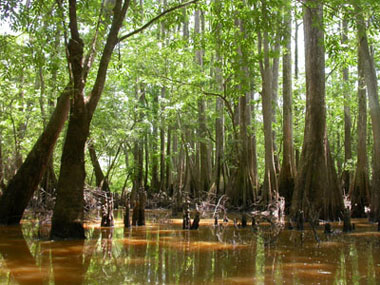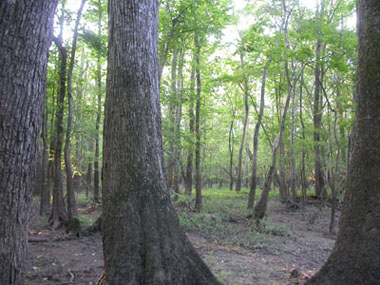 A frequently flooded hardwood forest. |
 Tyler Hicks shortly after he got a clear look at a female ivorybill in May 2005. |
||||
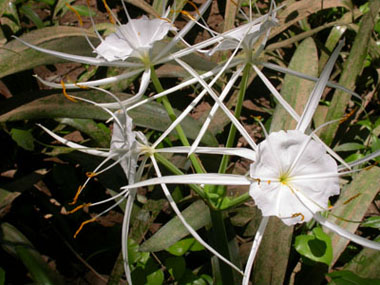 Spider lilies create a beautiful carpet when water levels drop in the spring. |
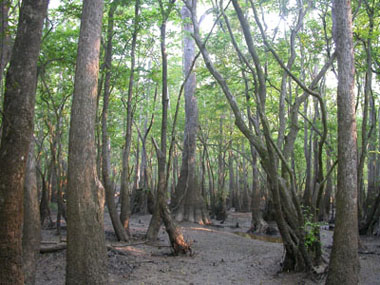 The Choctawhatchee River has no dams so water levels are constantly rising or falling. |
||||
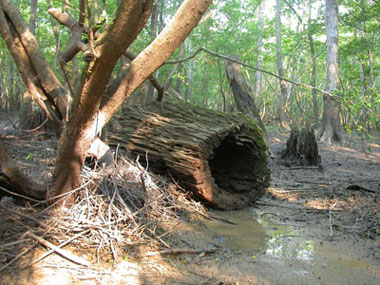 A lot of the big cypress were cut in the early twentieth century but enough huge cypress, oak, and sweet gum are left to provide abundant feeding and nesting habitat for ivorybills. |
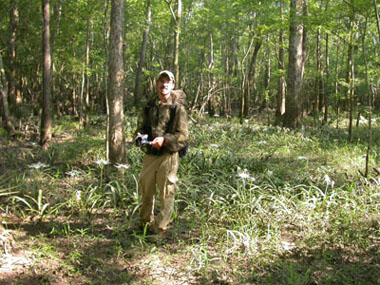 Tyler Hicks in a mosquito-proof shirt. Mosquito densities in summer can be daunting. |
||||
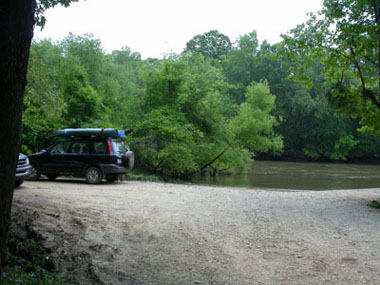 A typical river access spot. |
 6-foot cypress knees in a remnant stand of big cypress. |
||||
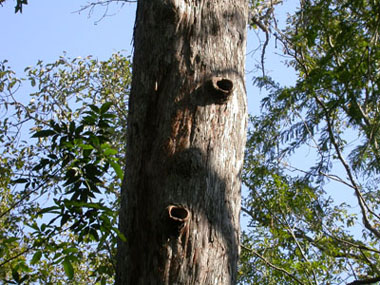 Old cavities on a big cypress. |
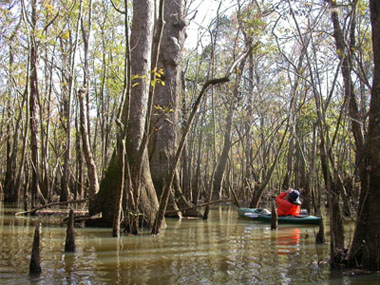 Mark Liu checking out a cavity. |
||||
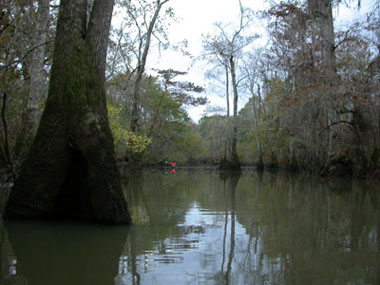 A nice oxbow lake surrounded by a forest of huge cypress and oak. |
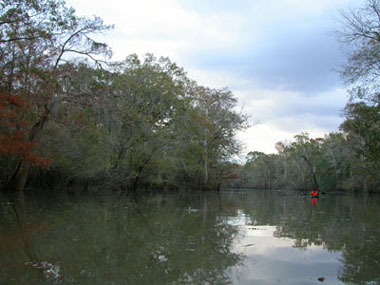 The subtle colors of a north Florida autumn. |
||||
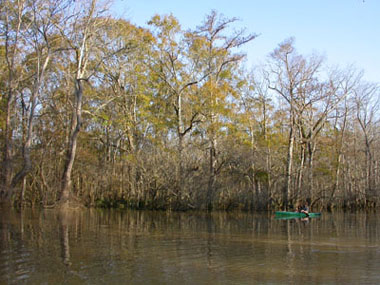 Chet Gresham just before he heard a double knock. |
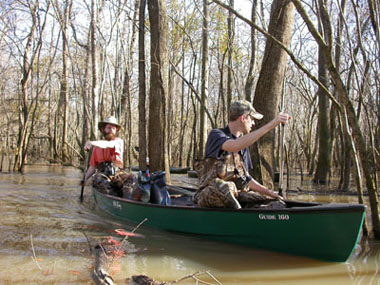 Dan Mennill and Kyle Swiston hauling gear. |
||||
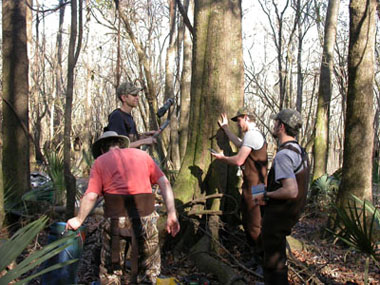 Dan, Kyle, Brian, and Tyler set up our first listening station. This station recorded many kents and double knocks. |
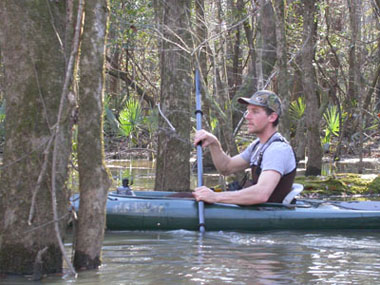 Brian Rolek spent hundreds of hours searching from a kayak. |
||||
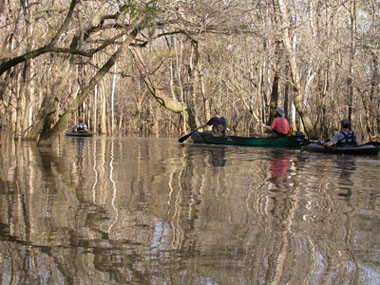 During high water, the entire Choctawhatchee River Basin is a huge lake. |
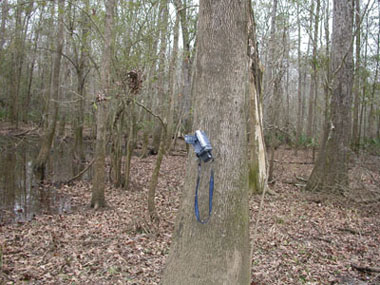 Our only means to monitor cavities was to watch them or film them with conventional cameras. |
||||
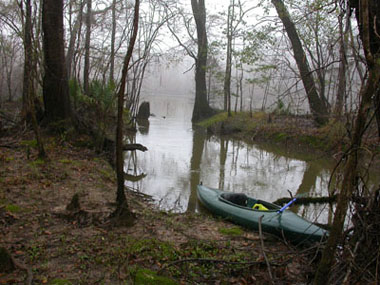 A foggy morning for ivorybill searching. |
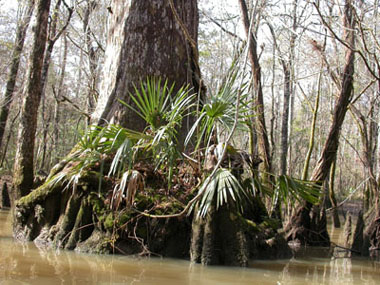 Not every big cypress was cut. |
||||
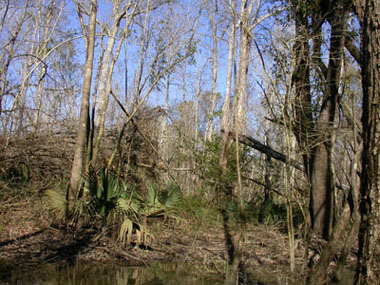 Many of our ivorybill detections were in this area where large trees were toppled by a tornado. |
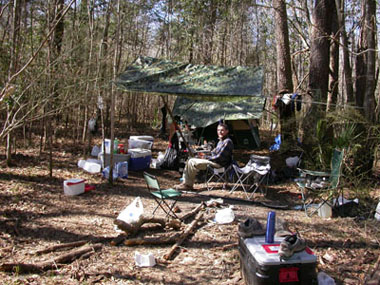 Beavertown, the remote camp where Brian and Kyle lived from mid-Dec until the end of April. |
||||
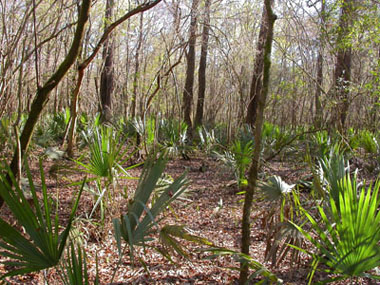 Palmetto is a common ground cover in many parts of our study area. |
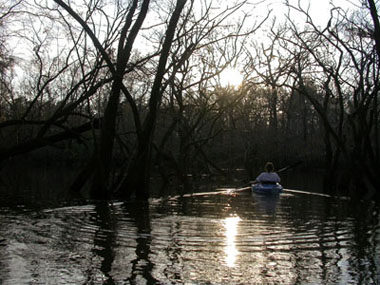 We typically searched past sunset. |
||||
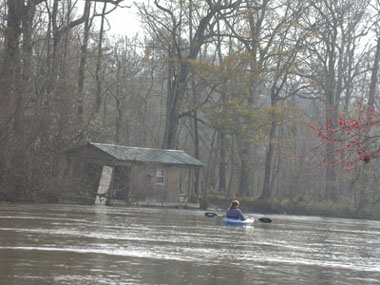 House boats, or more accurately floating houses, are a common sight on the river, used by locals as hunting and fishing camps. |
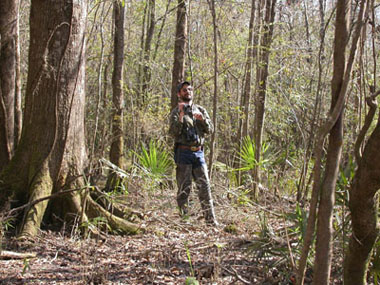 Dave Carr in documentation mode with his camera at the ready. Two hours later, from his kayak, Dave heard a kent and double knock. |
||||
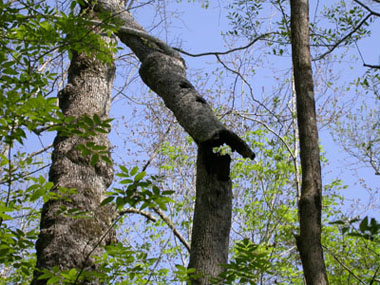 A broken cavity tree. |
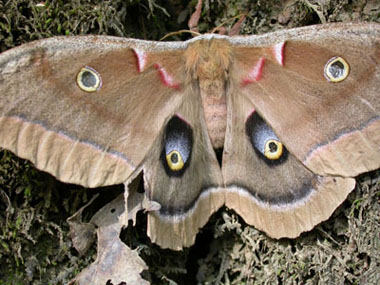 Ivorybills aren’t the only beautiful animals in the swamp. |
||||
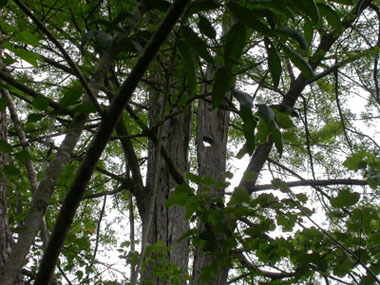 A large cavity in the shell of an ancient cypress. If this is an ivorybill cavity then they’ve been in these woods for decades. |
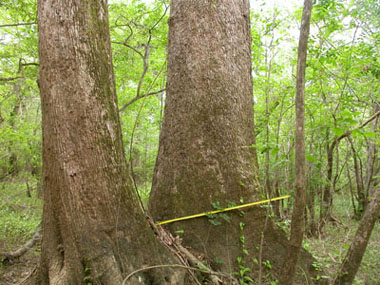 An oak near camp with a diameter of 48 inches. |
||||
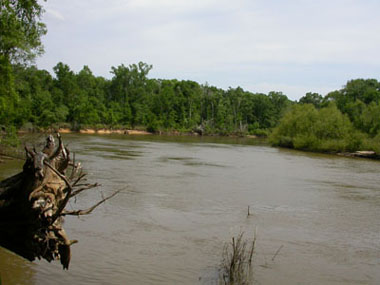 The main channel of the Choctawhatchee River. |
 The skull of a Triceratops revealed by spring floods (or maybe just a neat piece of wood). |
||||
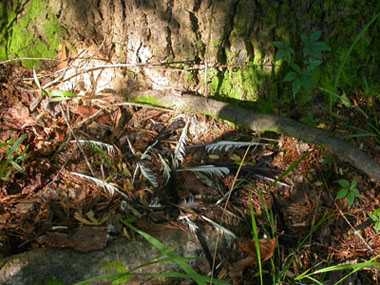 I'm glad the black/white wasn’t reversed on these feathers. |
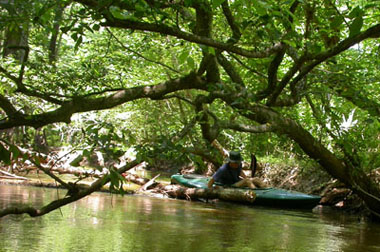 As the river level drops, kayaking the back channels gets more challenging. |
||||
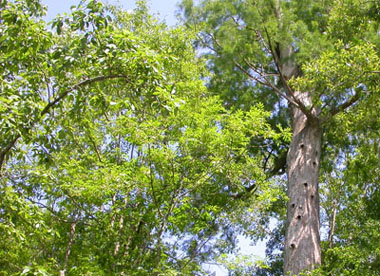 Many large cypress in the area are covered with cavities. |
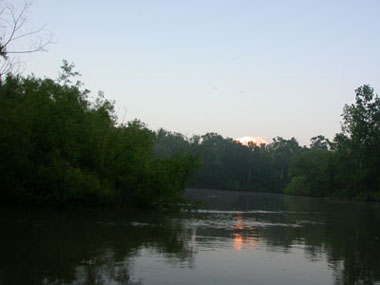 It is a magnificently peaceful place. |
||||
All information on this website is copyright Geoffrey Hill and Daniel Mennill. No information on this page may be used without explicit permission (ghillATacesagDOTauburnDOTedu or dmennillATuwindsorDOTca). |
|||||
 |
 |
 |
 |
 |
 |




















